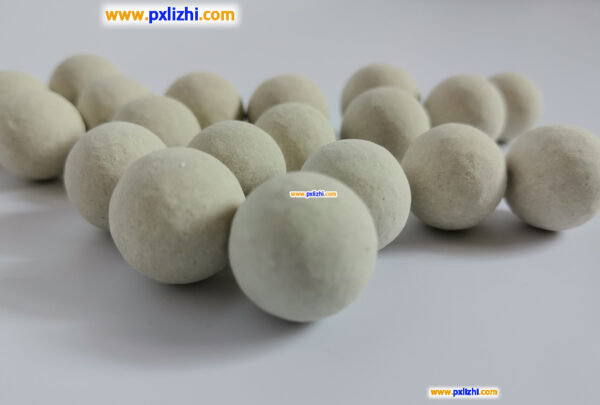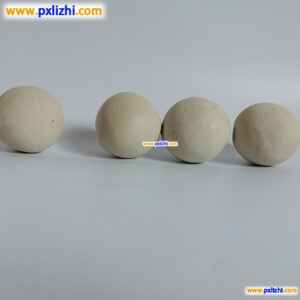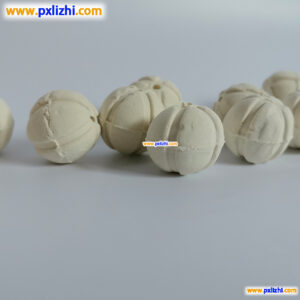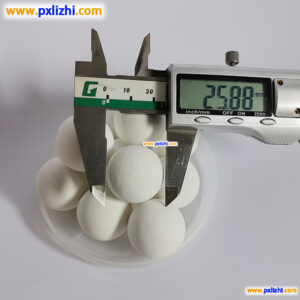
Wholesale advantage
As a wholesale inert ceramic ball catalyst factory in China, we focus on inert filler ceramic balls for the field of ball catalyst, complete specifications, rich varieties, support custom production, because many years of professional inert ceramic balls, so the quality is more stable, because the factory direct sales, so the price is more favorable.
Contact information
E-mail: lizhi@pxball.cn
Wechat ID: pxlizhi
Tel: +86-13979913701
Note: Email we will reply you within 12 hours of the required quotation or wholesale inert ceramic ball catalyst related questions

wholesale inert ceramic ball catalyst precautions
- Select the right catalyst ball: chemical production of a variety of reaction types, such as oxidation, reduction, hydrogenation, dehydrogenation, etc., different reactions on the catalyst active components, carrier properties and catalytic performance requirements vary greatly. For example, in the hydrogenation reaction, the ceramic catalyst ball with high activity and selectivity for the hydrogenation reaction should be selected; For high temperature reaction, it is necessary to select the catalyst ball with good thermal stability to ensure the stability of the structure and performance of the catalyst during the reaction. At the same time, the operating conditions such as pressure, temperature and material composition of the reaction should be comprehensively considered, and the catalyst ball that can adapt to these conditions should be selected.
- Loading operation specification: Before loading, ensure that the inside of the reactor is clean, free of debris and rust. During the loading process, it is necessary to avoid the catalyst ball falling directly from the height to prevent crushing. The method of layered loading is generally used, and each layer is evenly distributed to ensure the flatness of the catalyst bed, so that the material can pass evenly, and prevent the phenomenon of ditch flow and bias flow. When filling catalyst balls of different specifications or properties, it is necessary to operate in strict accordance with the order and height of the design requirements. In addition, after loading, appropriate compaction should be carried out, but not excessive, so as not to affect the activity of the catalyst and the flow performance of the material.
- Control reaction conditions: Reaction conditions such as temperature, pressure and material flow have a significant impact on the performance and life of ceramic catalyst balls. The high temperature may lead to sintering and deactivation of the active component of the catalyst, and the reaction rate may not meet the requirements if the temperature is too low. Excessive pressure fluctuation may cause the catalyst ball to be subjected to additional mechanical stress, resulting in breakage. Therefore, the reaction temperature and pressure should be strictly controlled within the appropriate working range of the catalyst and maintained stable. At the same time, it is necessary to accurately control the flow and composition of the material according to the performance and reaction requirements of the catalyst, to avoid excessive impurities in the material or improper proportion of some components, causing poisoning or activity reduction of the catalyst.
4 to prevent catalyst poisoning: many chemical raw materials and intermediate products may contain sulfur, phosphorus, arsenic and other impurities, these impurities will be adsorb on the active center of the ceramic catalyst ball, so that it loses activity, that is, catalyst poisoning phenomenon. Therefore, before the raw material enters the reactor, strict purification treatment is carried out to remove impurities that may lead to catalyst poisoning. At the same time, the reaction materials and catalysts should be tested and analyzed regularly to find potential poisoning risks in time and take corresponding measures.
- Do daily maintenance and monitoring: regularly test the performance of ceramic catalyst balls, such as activity, selectivity, mechanical strength, etc., and evaluate the operating status of catalysts by analyzing the composition and yield of reaction products. If the catalyst performance is found to decline, it is necessary to analyze the cause in time and take corresponding measures, such as adjusting the reaction conditions and catalyst regeneration. In addition, it is necessary to pay close attention to the parameters of the pressure drop and temperature distribution of the reactor, and if there is an anomaly, it is necessary to promptly investigate whether it is the problem of the catalyst ball and deal with it.
- Pay attention to the regeneration and replacement of the catalyst: in the process of use, the activity of the ceramic catalyst ball will gradually decline, and when it is reduced to a certain extent, its activity can be restored by regeneration treatment. Different types of catalyst ball regeneration methods are different, such as some can be regenerated by heating, purging and other operations in a specific atmosphere. However, the number of regeneration is limited, when the catalyst ball after repeated regeneration, the performance is still unable to meet the production requirements, it needs to be replaced. When replacing, it is necessary to operate in accordance with the prescribed procedures and properly dispose of the discarded catalyst balls to avoid pollution to the environment.
Ceramic catalyst ball application:
- Petrochemical industry: In the petroleum refining process, catalytic cracking is a key process to convert heavy oil into light oil. Ceramic catalyst balls can accelerate the cracking reaction of heavy oil molecules and improve the yield of light oil, such as gasoline, diesel and other products. At the same time, in the hydrofining process, it is used to remove impurities such as sulfur, nitrogen, oxygen and heavy metals in the oil, improve the quality of the oil and meet the requirements of environmental protection. For example, in the production of low-sulfur diesel oil, ceramic catalyst balls can efficiently catalyze the hydrodesulfurization reaction, so that the sulfur content in diesel oil is greatly reduced. In addition, in the catalytic reforming reaction, it can promote the dehydrogenation of alkanes into aromatics, improve the octane number of gasoline and the yield of aromatics.
- Chemical industry: In the synthetic ammonia industry, ceramic catalyst balls play an important catalytic role in the reaction of nitrogen and hydrogen to synthesize ammonia, improving the reaction rate and ammonia yield. In the methanol synthesis reaction, the selection of appropriate ceramic catalyst balls can accelerate the reaction of carbon monoxide, carbon dioxide and hydrogen to produce methanol, which is the key factor in the methanol production process. In addition, in oxidation reactions, such as the production of ethylene oxide, ceramic catalyst balls can make ethylene and oxygen react efficiently to produce ethylene oxide under specific conditions, in the field of fine chemicals, such as esterification, hydrogenation and other reactions are also inseparable from the application of ceramic catalyst balls to improve the selectivity and yield of target products.
- Environmental protection industry: In the field of automotive exhaust gas purification, ceramic catalyst balls play an indispensable role. It can convert harmful gases such as carbon monoxide, hydrocarbons and nitrogen oxides in automobile exhaust into harmless substances such as carbon dioxide, nitrogen and water through catalytic oxidation and reduction reactions, effectively reducing the pollution of automobile exhaust to the environment. In terms of industrial waste gas treatment, for some waste gas containing volatile organic compounds (VOCs), ceramic catalyst balls can catalyze its oxidation and decomposition, converting VOCs into carbon dioxide and water, and achieving emission standards of waste gas. At the same time, in wastewater treatment, some ceramic catalyst balls can be used to catalyze wet oxidation and other processes to degrade organic pollutants in wastewater and improve the biodegradability of wastewater.
- Energy industry: In the field of fuel cells, ceramic catalyst balls as electrode catalysts can promote the conduct of electrochemical reactions and improve the performance and efficiency of fuel cells. For example, in a solid oxide fuel cell, ceramic catalyst balls contribute to the reduction of oxygen and the oxidation reaction of the fuel to produce electrical energy. In the process of hydrogen production, such as methanol steam reforming hydrogen production, water gas conversion hydrogen production and other reactions, ceramic catalyst balls can accelerate the reaction rate, improve the hydrogen yield, and provide support for the development and utilization of hydrogen energy.
- Metallurgical industry: In the process of non-ferrous metal smelting, some ceramic catalyst balls can be used to promote the reduction reaction of metal oxides and improve the extraction efficiency of metals. For example, in the smelting of copper, nickel and other metals, through the use of appropriate catalysts, the reaction temperature can be reduced, the reaction speed can be accelerated, and the recovery rate of metals can be improved. At the same time, in the production of iron and steel, ceramic catalyst balls can be used in some auxiliary reactions in the process of blast furnace ironmaking to optimize the ironmaking process and improve the quality and output of hot metal.










Reviews
There are no reviews yet.